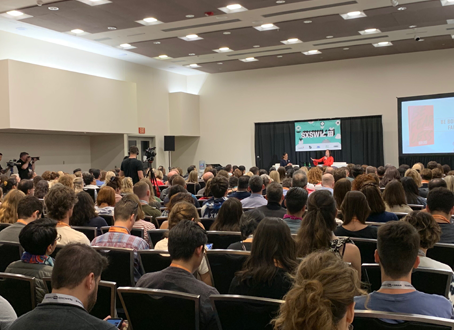This post was written by Rohit Menezes on behalf of the Case Foundation:
Growing or scaling an organization and its impact in any sector is hard. All leaders face the day-to-day challenge of operations – what one of my heroes has called “the constant grind to get folk to do what they agreed to do.”
In the nonprofit sector, this challenge is compounded by scarce resources and an incomplete understanding of what works. In this context, simply thinking about growth is difficult, and planning for growth can feel like an indulgence.
In my experience, however, planning is a vital element of effectively scaling an organization and its impact. For nonprofits, there are many ways to learn about planning for scale including resources available at The Bridgespan Group’s website. In this same spirit, I want to share some practices I have noted of organizations that have scaled successfully as fuel for dialogue. They are:
- Focusing on critical relationships
- Embracing opportunism
- Thinking exponentially
Focusing on critical relationships.
Fundamentally, you grow a business at the rate you are able to grow relationships. In the for profit world, customer relationships are paramount. In the nonprofit sector, relationships with funders, stakeholders, and political champions can make the difference for organizations. To grow effectively, organizations must “planfully” scale those relationships. In some cases, this means developing even more relationships. In others it means upgrading existing relationships to get the kind of engagement you need. Either way, it requires recognizing that relationships are critical catalysts for scaling and impact. Developing board members and re-developing the composition of a board over time creates ferment for growing a broader set of relationships – an approach taken by many organizations. At the same time, most organizations need to be even more focused on external stakeholder relationships.
One local affiliate of a national network in Texas took this challenge very seriously. Its funding historically had come mostly from special events, so it pushed to diversify its revenue sources through the cultivation of state government funders. But it encountered a problem: the organization’s leadership did not have any relationships in the state capital. To connect itself more purposefully to government funders, the affiliate actively recruited board members with the right relationships, including the former chairman of a critical state agency. It also created a position called honorary state chairman, which rotates bi-annually to a new appointee. A succession of powerful policymakers has held the position, including the attorney general and a U.S. senator, helping to contribute to a dramatic increase in government funding.
Embracing opportunism.
Sometimes growth and scale come not from formal planning, but from flexibly identifying and responding to the right opportunities. An organization’s ability to respond to opportunities is shaped by many factors – including decision-making processes and IT infrastructure. Advance thinking and planning around goals, and the ways and means of achieving them, can allow an organization to contextualize opportunities, respond swiftly and appropriately to the unanticipated, and be “strategically opportunistic.”
Thinking exponentially.
Scaling impact is about more than replication. At Bridgespan, we have been asking the question: how do you get 100x impact with just 2x the organization? To answer this question, leaders need to think creatively about leverage – from the use of technology, to scaling leadership or sharing knowledge, that create a true ripple effect. Think advocacy, or new technology such as social networking. I increasingly hear clients and others speak of “starting a movement” as opposed to providing “just” direct service. Bridgespan’s managing partner Jeff Bradach wrote of this in the Stanford Social Innovation Review in June describing among other examples KaBOOM!, which helps communities build new playgrounds for children. In its first 10 years, KaBOOM! built nearly 750 playgrounds. But its reach was partly limited by the number of staff it could deploy to each site. Then KaBOOM! shifted from hands-on management to a Web-based platform that helps communities organize their projects. The result: approximately 4,000 more playgrounds in just three years.
But these are just three observations from my experience about scaling. What are yours?
Guest blogger Rohit Menezes works with the Bridgespan Group, where his recent client work and research has focused on youth development and place-based initiatives.





